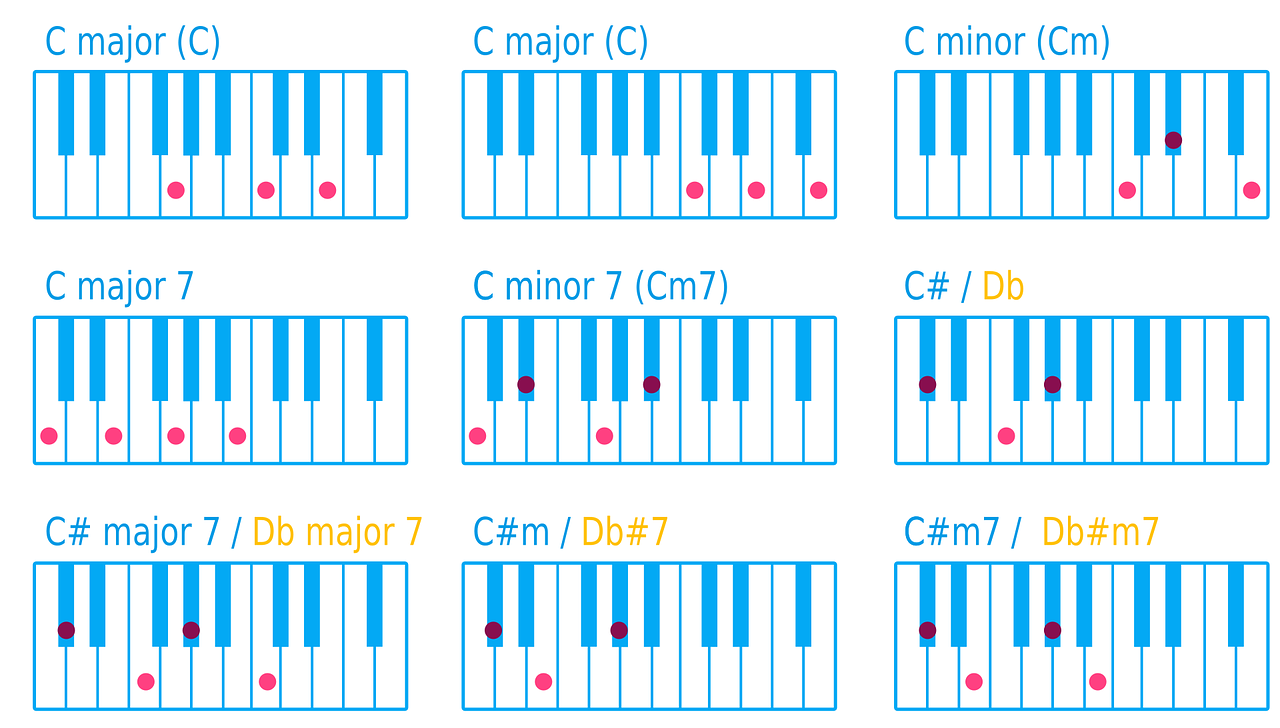Difference between chords and scales. This is one of the building blocks of your musical knowledge. Working out the difference between the two is relatively simple, but like everything, if you are new to it, there is a learning curve.
It’s easy to see why people would get confused about the difference between chords and scales. You could describe both as “a collection of notes that go together”. So how do you differentiate? What is a chord and what is a scale when it comes to playing the piano?
Of course, it wouldn’t be piano if there weren’t a little bit of debate on the subject, too! Different people have different definitions and slightly altered ways of looking at it. As you go more into music theory you might start to develop a different take. However, we’ve put things really simple in this article.
When you see a pianist playing three or more notes at the same time, pressing them together, that is usually them playing a chord. When you see a pianist playing a melody, moving up and down the piano, often one note at a time, that will be along a scale.
This is an incredibly simple way of putting it. For a beginner who wants to work out the difference between chords and scales, though, this is a good way of trying to make sense of it.
Difference Between Chords and Scales – Scales Explained
According to “Simplifying Theory“, “a music scale is an organized sequence of notes. For example C, D, E, F, G, A, B, C”. Put a sticker on each of these notes on your piano, and you are playing the scale in question, this is the C Major scale. Play them in any order or rhythm, you are still on this particular scale.
There are different scales. In fact, there are absolutely loads of them! The notes work together in different ways, for instance, a “minor” scale will probably provide a more melancholy sound. A “major” scale is upbeat. There are blues scales with a bluesy, attitude-driven feel to them. There’s a lot to learn, but the principle remains the same.
The E major scale, for example, consists of the notes E, F#, G#, A, B, C#, and D#. Play these at any octave and in any order and you are still playing within the E major scale.
Scales are a pattern of notes at an interval that means they will sound good together.
Chords Explained
Chords are far more predetermined. By this, we mean that the chord isn’t really open to be played in a lot of different ways. Instead, a piano chord is a collection of three notes or more, usually pressed at the same time.
A C major chord is played with the notes C, E and G. While you can play these in different octaves (and sometimes “inverted” in different orders) you can play them together and you will be playing the C chord. Our academy has a really simple guideline for playing chords and can get you started very quickly and effectively.
Think of it this way with a guitar comparison. If you see a guitarist strumming all of the strings, they’re playing a chord. If you see a guitarist playing one string, and moving their fretting hand to change the notes, they’re playing notes in a scale.
Conclusion – Differences Between Chords and Scales
It definitely helps to have a go at playing if you are trying to understand the difference, the best way is to dive in and try our Academy, which can help you to play chords and notes on a scale, and understand how it is different.










